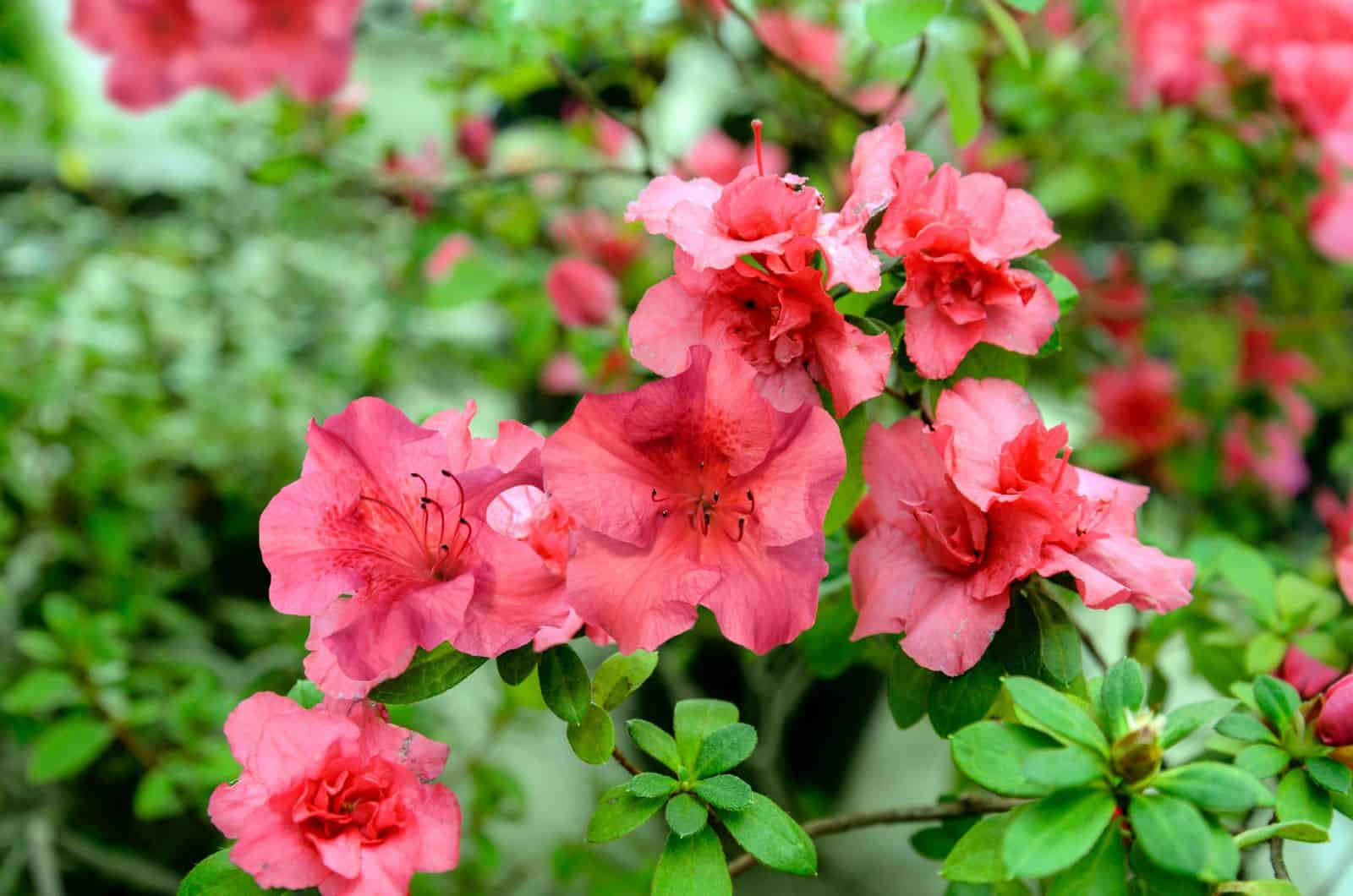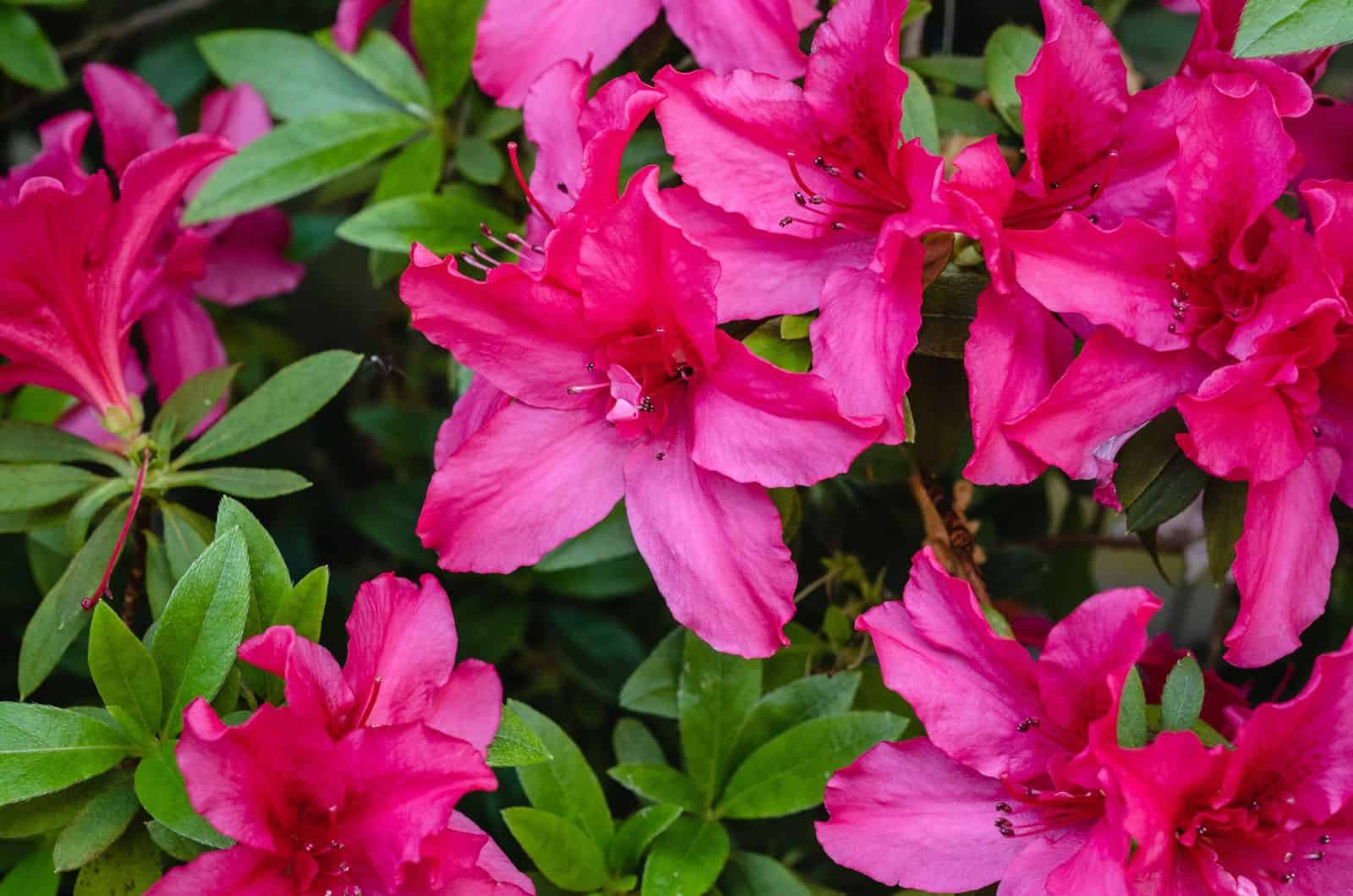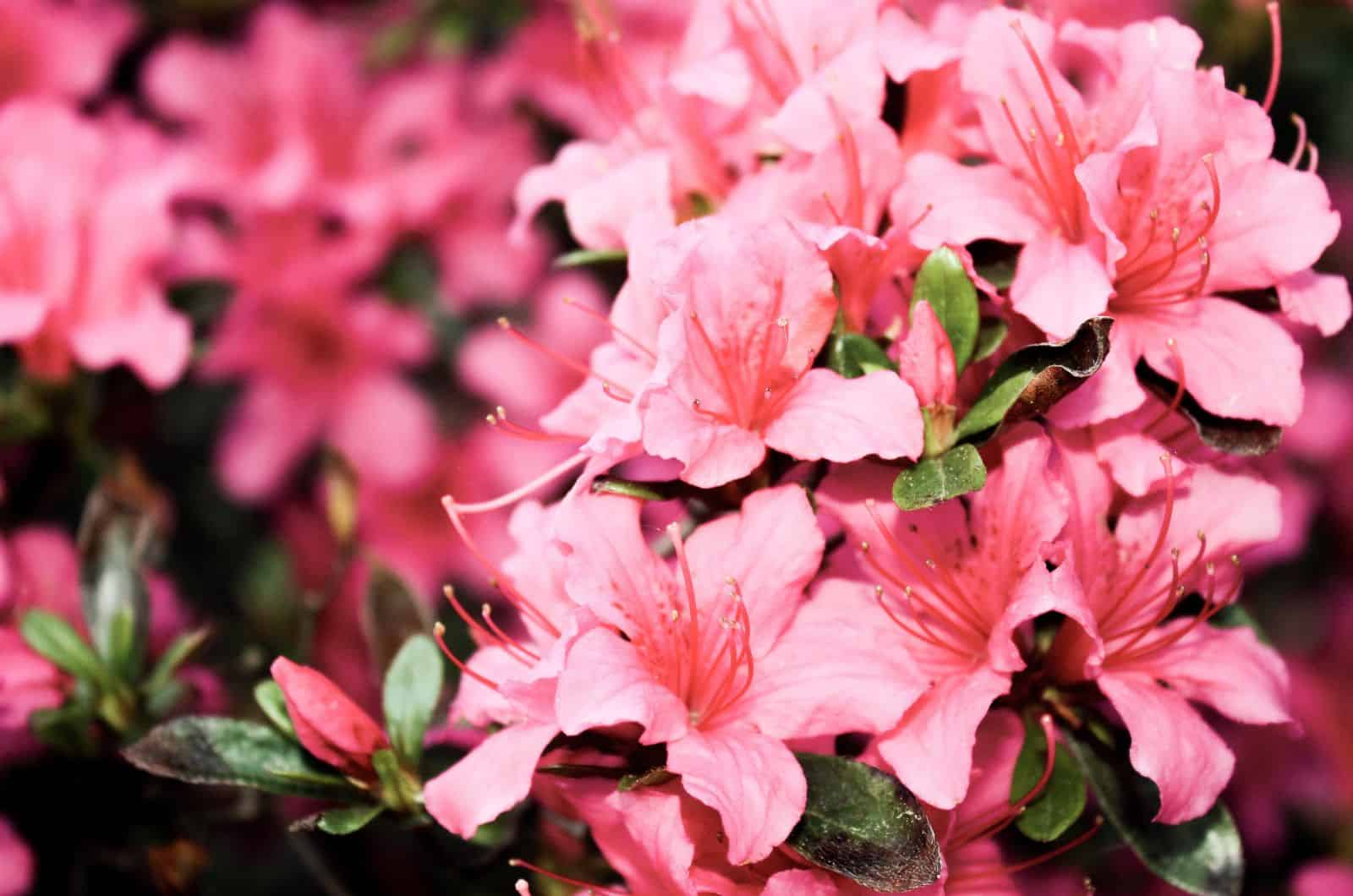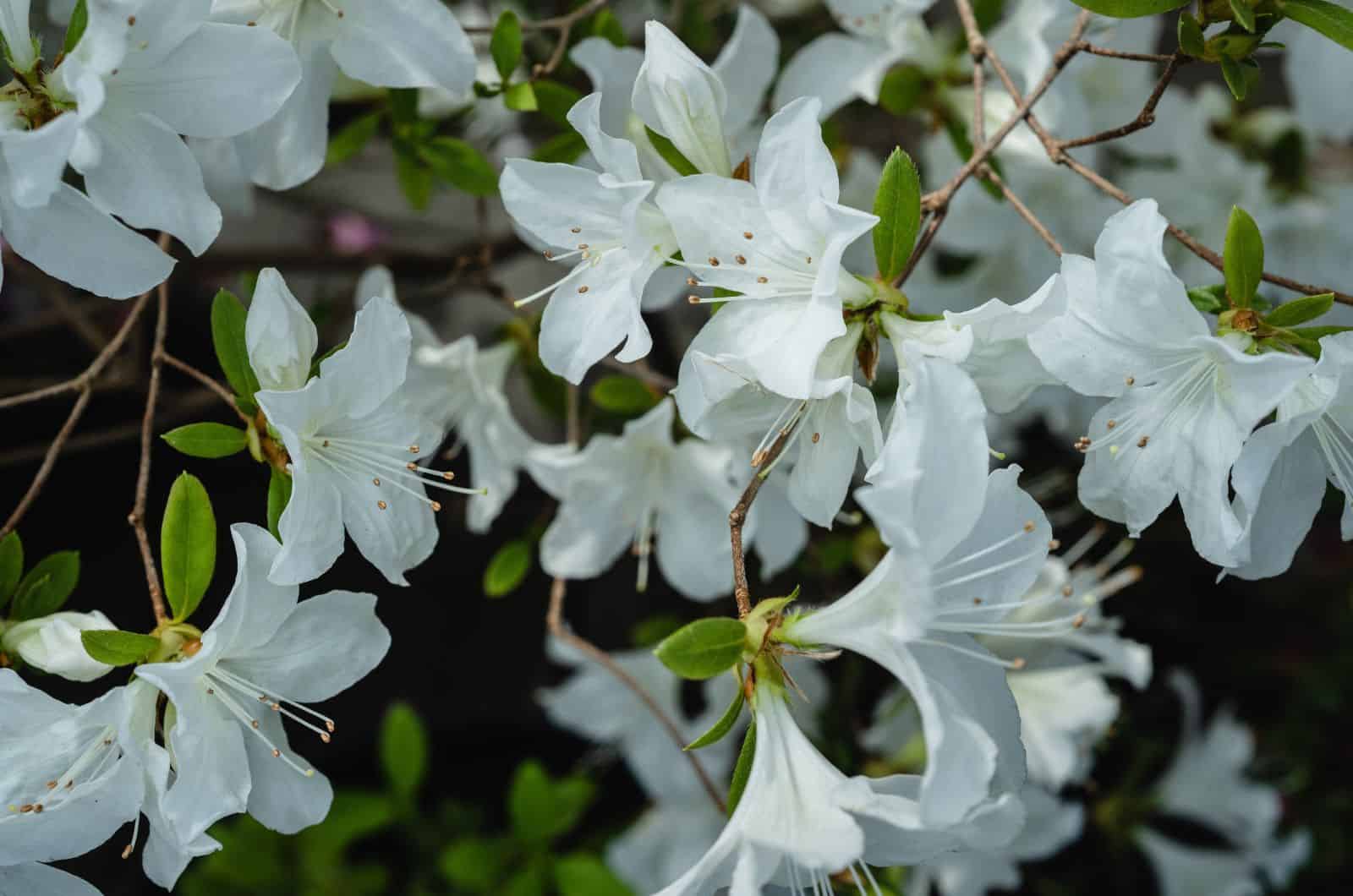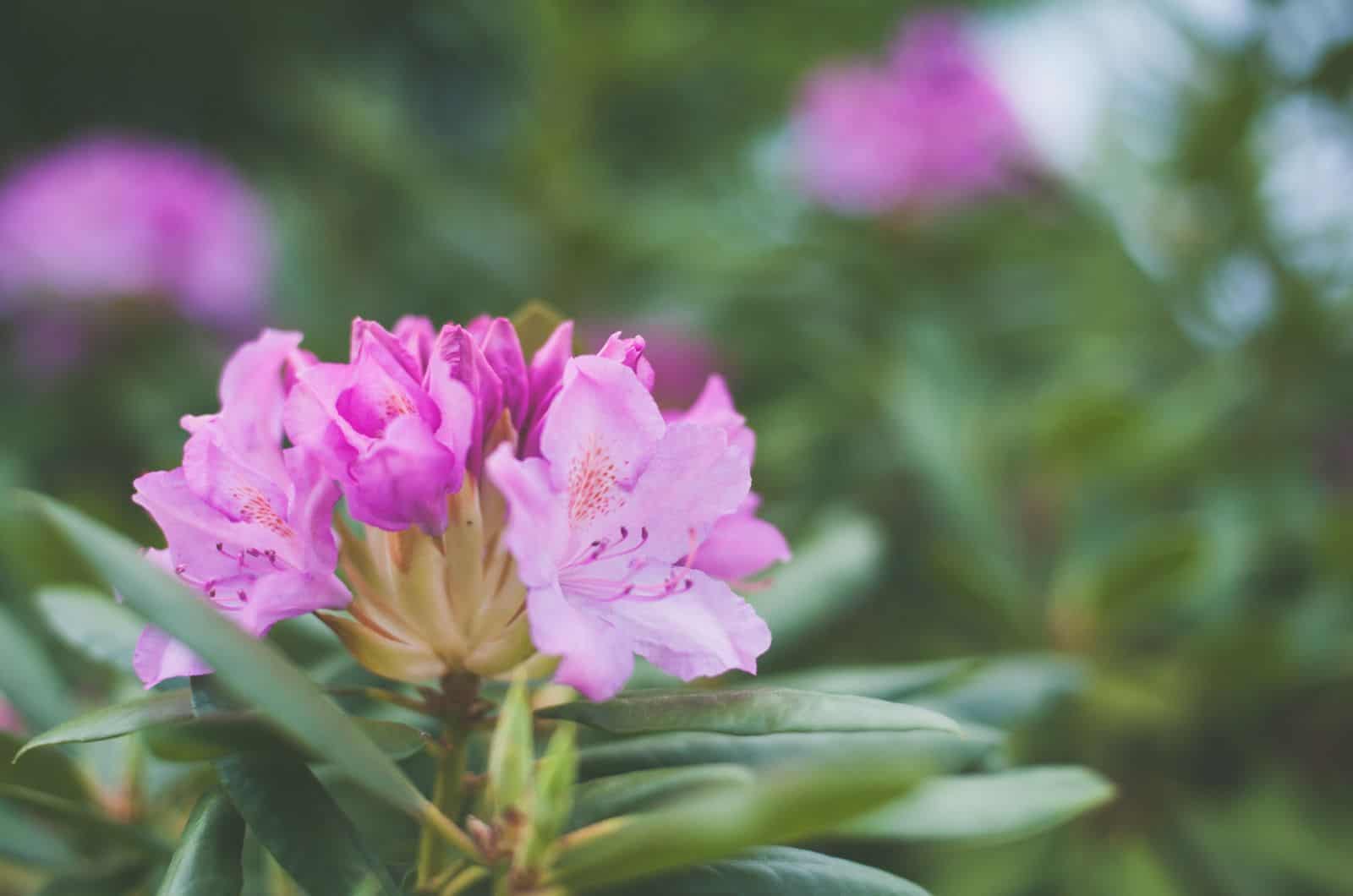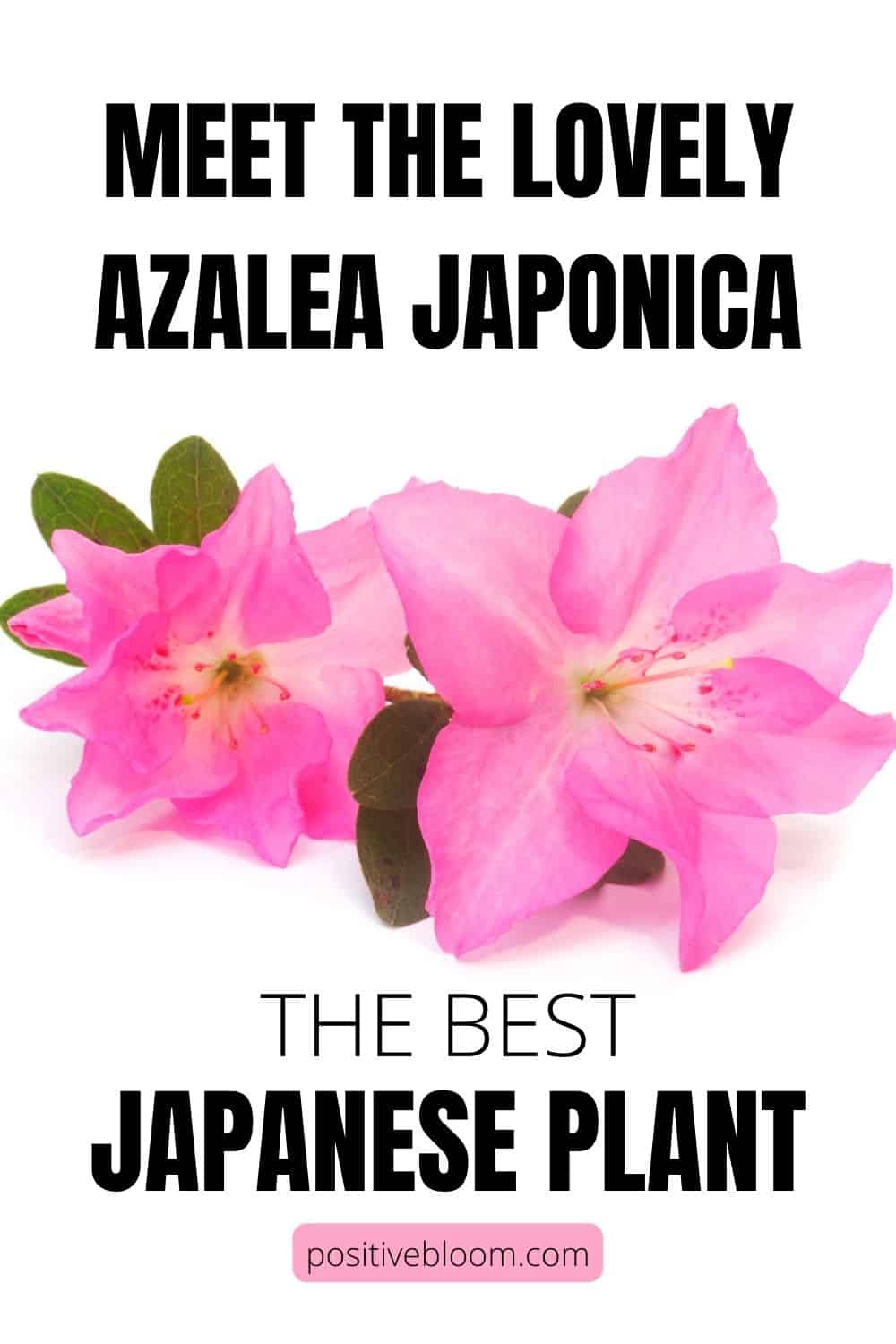Let’s talk about one of the prettiest flowering shrubs that can be easily grown in gardens, which is the Azalea Japonica, otherwise known as the Japanese Azalea. This hardy dwarf shrub produces lovely flowers in bright colors, including pink, red, purple, and white flowers.
Just imagine how colorful your garden will look once the Azalea starts blooming!
There are also some other uses aside from just looking pretty — for instance, you can even use this flowering plant for culinary purposes or try and grow it as a bonsai tree!
If you want to learn more about the Azalea Japonica, keep reading!
Azalea Japonica Common Features
The Azalea Japonica, scientific name: Rhododendron Azaleastrum Tsutsui, is a flowering shrub that belongs to the Ericaceae family. This shrub is actually a type of evergreen Rhododendron, though it has numerous deciduous cousins.
It is compact and can grow up to 6 feet tall, but you can regularly prune it and grow it as an indoor Japanese houseplant.
This evergreen Azalea produces small and glossy green leaves that create a perfect background to the colorful blooms. We consider them spring flowering shrubs because they start blooming in March and April and they continue to produce lovely flowers during the summer months.
You will be able to spot red flowers and purple flowers, and also pink and white flowers on this shrub. The flower color depends on the soil acidity, similar to Hydrangeas.
It is a slow-growing variety, so you won’t be busy with pruning all the time. What’s also great is that you can combine them with different varieties and have the most mesmerizing Zen garden!
Remember, the most popular meanings of Azaleas are elegance, fragility, and abundance.
You can choose between the Encore Azalea (which produces flaming red blooms), Satsuki varieties (they bloom at the end of spring), and Kurume varieties (which feature red autumn foliage).
How To Grow Azalea Japonica
You won’t need any special gardening tips when it comes to growing an Azalea Japonica because this plant is relatively low-maintenance. We already mentioned that this is an Ericaceous plant, and they absolutely love acidic soil!
However, they like well-drained soil as well, so you should consider using loam, chalk, or sand. Keep the soil moist, but avoid overwatering because it can lead to root rot.
When planting, you should find a location where they can receive full sun, though they are also known as shade plants because they can tolerate growing in part shade as well. Growers usually combine them with other spring plants that also like acid soil, such as Camellias.
The Azalea Japonica is also a great companion because it produces plenty of flowers that can attract various pollinators.
Don’t plant them too deeply — the top of the root ball should be at ground level. Keeping the soil moist during the growing season is essential as they need enough moisture to produce those pretty flowers.
These plants have shallow roots, so adding mulch around the plant’s base can be extremely beneficial. Not only is this going to help with moisture retention, but it will also protect the roots and prevent weed growth. You can either use pine needles or pine bark for mulching.
Although they are not needy, adding some fertilisers in late spring can encourage more flower and leaf production. Pruning is only necessary if you want to obtain a certain shape or if you grow your Azalea as a Bonsai. Otherwise, remove only dead leaves and flowers.
Keep in mind that these plants can withstand freezing temperatures, although they thrive in temperatures around 50 and 60 degrees Fahrenheit.
Common Issues With The Azalea Japonica
Even though this is a hardy plant, it can still have some issues. For instance, aphids and spider mites absolutely love these flowering shrubs. If you notice any leaf discoloration or webbing, check the underside of the leaves — this is where pests usually settle in.
You can use neem oil or pesticides to get rid of them. If there are only a few, you can simply hand-pick them.
The most common fungal diseases are root rot and leaf gall. Your Azalea has leaf gall if the leaves begin to expand, curl over, or form fleshy bulges. Luckily, you can use fungicides such as horsetail tea to get rid of it.
Root rot forms due to overwatering. Therefore, keeping track of your watering habits is a great preventative measure. In case your plant gets root rot, you must repot it and trim off any mushy and decaying roots.
Signs of root rot include smelly soil, legginess, brown and reddish trunks and roots, and leaves turning yellow and falling off.
Frequently Asked Questions
1. Are Japanese Azaleas hardy?
Yes, Japanese Azaleas are hardy flowering plants that can even withstand freezing temperatures!
They are not too picky about watering and nutrients, though they require acidic soil to thrive and grow. They can adjust to growing in full sun and partial shade, along with some other shade plants such as Hostas or Camellias.
2. How do you take care of Japanese Azaleas?
Make sure that you provide them with well-draining and acidic soil. They thrive in temperatures from 50 to 60 degrees Fahrenheit, though they can tolerate some freezing temperatures as well. They can also grow in both partial shade and full sun.
Japanese Azaleas like to have moist soil, and adding mulch can help with moisture retention. You can also fertilize them in late spring to encourage new leaves and flower production.
3. What colors are the flowers of the Azalea Japonica?
You can spot red, white, pink, and purple flowers on the Azalea Japonica.
4. What is the best time to prune Azaleas?
The best time to prune Azaleas is after they stop blooming and before they have produced new flowers. This is usually in early spring, and you have to be careful not to cut any new flower buds because they will turn into flowers later in the growing season.
To Sum Up
If you want to have a colorful garden filled with low-maintenance plants, then the Azalea Japonica is definitely the right plant for you!
They can tolerate full sun and partial shade, withstand freezing temperatures, thrive in acidic soil, and at the same time produce mesmerizing flowers that can make your garden look absolutely dreamy.
I hope this article was helpful.
Until next time!
Like this post? Share or pin it for later!

